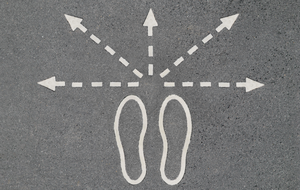In Chablis-sipping circles, it has become fashionable to condemn the small-school initiative by the Bill and Melinda Gates Foundation. The foundation encouraged urban school districts to close large, dysfunctional high schools and replace them with smaller ones, either in alternative spaces or by placing several schools within the building that once housed the large one.
New York City became a poster child of the initiative when New York school chancellor, Joel Klein, accepted Gates dollars and began, in 2002, to create 123 “small high schools of choice.” They were designed to replace 23 dysfunctional high schools to be closed sometime after 2008.
Like much else Klein has tried to accomplish, the small school initiative, after initially winning union support, was eventually condemned by the New York’s United Federation of Teachers as well by ex-school reformer Diane Ravitch. The small schools, she says in her recent book, were mostly “theme schools” that “produced some offbeat results, such as a high school for future firefighters; a school for the hospitality industry;” and so forth. Meanwhile, she says, “a sad story was acted out in one high school after another. As a high school for 3,000 students was closed down, it would be replaced by four or five small schools for 500 students. What happened to the missing students?”
School closures are inevitably controversial, of course. The proposed closure of 19 of the dysfunctional schools was attacked so relentlessly at public hearings—the teachers union supplied 50 buses to haul its supporters to the events–that an elected state court judge ruled in favor of the union and blocked the school closures on the flimsy grounds that the school district had not followed requisite procedures for assessing the educational impact of their closure. (It dreamed up requisite procedures by pretending they should be similar to those used for assessing environmental impacts.)
After all that sophisticated criticism of the replacement of large schools with smaller ones, it comes as a total shock to learn that students are more likely to graduate from high school in New York City if they attended one of the small high schools. Sixty-nine percent of those who went to a small high school graduated from high school four years later, as compared to just 62 percent of those who did not. Those still in their sophomore and junior years were earning more credits toward graduation, giving hope that the success of the first cohort of students will be repeated by subsequent ones.
That 7 percentage point increment is nothing like the 21 percentage point increment in high school graduation rates induced by the DC voucher program, about which I posted a blog a couple of weeks ago, so I am not going to claim that the small school initiative is as breathtaking a success as the DC voucher program has been.
Still, I was taken aback by these results, especially given the endless criticism the small schools initiative received. Could this study be another one of those reports school districts often ginger up in such a way as to get the results they want? Or did the small school experience actually have a positive effect?
Putting on my skeptically green eye shade, I downloaded the study and dug in—only to discover that the study, carried out by the respected Manpower Development Research Corporation (MDRC), is a randomized field trial, this time executed properly.
Unlike a badly designed charter school study recently released by Mathematica, which compared students who changed schools with those who did not, MDRC studied only students who moved to a new school regardless of whether they attended a small one or went elsewhere.
One hundred five of the small schools were oversubscribed and admission was by lottery. MDRC was thus able to compare the progress through high school of those who won the lottery with those who applied but lost out and were assigned to their second or third choice high school instead. The two groups of students were alike save for the luck of the draw.
Importantly, every student—both the winners and the losers–changed schools the next fall. That is what all students must do when they enter 9th grade in New York City. So we have a nice comparison between students who changed schools to go to a small school with students who changed schools to go to the usual large New York City high school. Like is compared to like.
Admittedly, the MDRC study of New York small schools does not prove that every such initiative undertaken in cities across the country had the same salutary effect. It could well be that Klein’s team did a better job of designing the small school initiative than other cities did.
But it does show that small high schools, if properly designed, work better in big cities than large schools do. Hopefully, New York’s judges will worry more about student graduation rates than “educational impacts” the next time this case appears before them. After all, low graduation rates have an educational impact, too.



